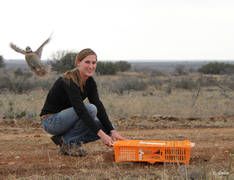
Quail Research in South Texas: A Legacy Spanning Four Generations

South Texas is the Last Great Habitat that supports extensive populations of wildlife on a vast expanse of relatively unspoiled rangeland. This is particularly true for wild quail, especially the Northern Bobwhite (Colinus virginianus), hereafter bobwhite. A recent Geographical Information Systems survey indicated that there are about 11 million acres of habitat that supports wild bobwhite populations in the South Texas Ecological Region (Brennan et al. 2014). This is more bobwhite habitat than exists anywhere else within the species' distribution. Given the widespread and ongoing declines of bobwhite populations throughout their geographic range, this is an important factor when it comes to bobwhite conservation.
There is a unique set of circumstances that resulted in South Texas becoming one of the Last Great Places for quail, and as a result quail hunting. These circumstances involved compatible land use trends, as well as economic and cultural factors, that came together in such a way that one of the results was a major and sustained research initiative on wild quail in South Texas. The primary objective of this research initiative is to develop a scientific basis for the sustained management of wild quail populations in South Texas. Because of their generous financial support over many decades, hunters have been a fund mental component of quail research in South Texas. However, the quail research conducted in South Texas during the past eight decades also represents a massive contribution to applied ornithology. The purpose of this essay is to provide an overview of the factors that have led up to the current state-of-the-art of quail research in South Texas.
